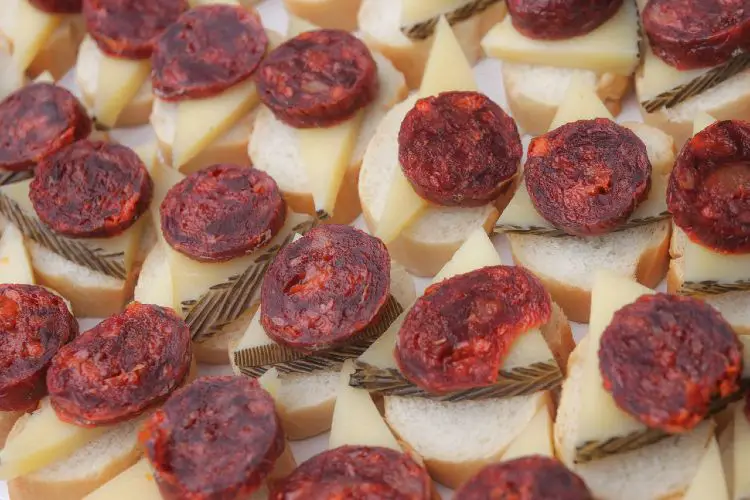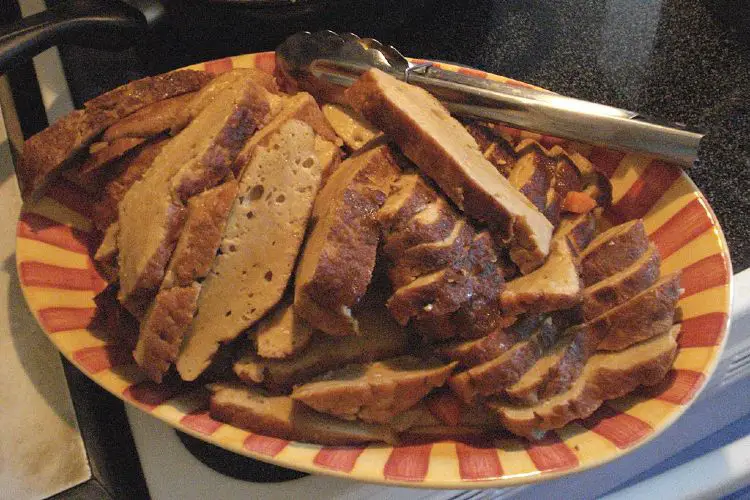“A Cook’s Year in a Welsh Farmhouse” by Elisabeth Luard
The cookery books I love best are actually not read for their recipes. Of course I cook from them, find inspiration and garner ideas, but, in my mind, there always has to be a story, a narrative: pictures need to be painted, a momentum needs to be created and cooks need to play out their preparations, struggles and endeavours. It’s the domestic detail, its descriptions and denouements that make for really good food writing.
We cook, therefore we are. The sense of being, locality, growth, action and pleasure are all interconnected in the mind of the genre’s reader.
And so it is that with “A Cook’s Year in a Welsh Farmhouse” Elisabeth Luard portrays her everyday life, from January to December, at her home, Brynmerheryn in West Wales. As one of Britain’s most acclaimed food writers, author of “European Peasant Cookery”, “European Festival Cookery”, “The Food of Spain and Portugal”, “Sacred Food” and “The Latin American Kitchen” her readership is accustomed to her scholarly, well researched and intelligent prose, but in this, her latest work, we are led down a gentler path.
I went to visit Elisabeth at her home, to talk about the book and also to find out more about how and where she lives. You can read all about that day in my other article, “Lunch with Elisabeth Luard”.
Elisabeth’s husband, Nicholas Luard, died five years ago, and she now lives alone in the house her family inherited from her late husband’s godmother, Monica Rawlins, twenty years ago. To set the scene right from the very start Elisabeth writes:
“The house on the hill of the ram, Brynmerheryn, sits four square to the winds from the Cambrians on the lip of the Tregaron Bog in far West Wales ….There’s a tolerance for those who come from elsewhere to practise their trade among the community. Hospitality to strangers is an obligation in these parts, as it is wherever people remember what it means to live in want. And I have reason to be grateful for the welcome at the hearth fire. I’m a stranger here myself.”
With the four seasons as the backdrop of the writing, we are taken through the months of Elisabeth’s kitchen, larder, shopping basket, garden and plate, her family a constant and engaged pivot at the centre of all her references.
She has four children and seven grandchildren and much of the food that is prepared is either made with the children or for them.
Cataloguing the life cycle of the rich and diverse flora and fauna of this region, the author brings together the interplay and interconnectedness of what goes on around her, through hedgerow, wood, garden, sea and sky.
Meat comes in from the wild, and is used to make spiced venison pasties and rabbit with tagliatelle, cream and mustard. Fruit and vegetables are harvested from the garden and stored to create spiced apple and pumpkin soup and wild leaf salad with spinach and rosemary. The valley shopping foray yields the first asparagus and tender young peas so an asparagus and pea tian is the resulting light lunch. Nettles, sorrel, mushrooms and berries are gathered by Jessie, Bonnie and Harper, three of the grandchildren, who have spent their every holiday at “Grandpa’s pink house” as they call it, to make ravioli, salads, rice dishes and cordials.
Through each month you wait and long for the flavours that nature will bring. Elisabeth writes:
“Midsummer …and I have shopping to do around the neighbourhood before the grandchildren arrive for their summer break. First a visit to the farm shop in Lampeter…then on my way home a detour along the coast for mussels and mackerel…from the fishmonger in Aberaeron, whose supplies come direct from the fishermen at Haverfordwest.”
The reader learns about the people who have welcomed Elisabeth to this land and those that have influenced her and created their own imprint in her journal. The farming Edwards family are her nearest neighbours, and they speak for Elisabeth in the community “ …an important consideration in a region such as this, which is Welsh speaking and engaged in a way of life that has changed little, at least in spirit, for many centuries.”
What you quickly gather from these diaries is that Elisabeth is prodigiously busy: although living alone, her grandchildren punctuate her schedule at half-terms and holidays. She writes for magazines, newspapers and reviews, she directs the Oxford Food Symposium, travels, gardens, forages and cooks. Her every waking moment is centred around food: it’s planting, pruning, cutting and harvesting, across the seasons, as well as recipe writing and researching.
The photography by Clare Richardson, who lives quite locally, captures the nostalgia of childhood, illuminated in the “Swallows and Amazons” light that bathes all of the images. Her eye is sensitive and alert, catching those fleeting moments that flicker and fly like gossamer in the wind. We see the children rolling in the tall grass one minute, their hands sticky with bread dough the next, or perching barefoot on a chair, stirring a pot on the Aga, while Grandma shows how to use a knife to cut squashes. As well as being a cookbook, this book is a family portrait, a catalogue of nature and nurture, country life and a timeline of a widow’s journey through quiet, introspective days of solitude. Being a writer is a lonely business.
The watercolour illustrations, painted by Elisabeth herself, are so beautifully executed they are worth a king’s ransom and a separate book all by themselves. In their confident and charming way they depict the changing seasons better than any words or recipes could: Welsh poppies in early summer, dandelions in high summer, pheasants in the autumn, clementines in December. My eyes were captivated by the beauty of the maiolica, faience and earthenware plates, bowls and platters that Elisabeth has collected over the years. None of them are stylist’s props: every recipe and every serving was created in Elisabeth’s kitchen, chips, cracks and kitchen peelings escaping airbrushing or scrupulous editing.
Amongst the recipes are many that I am very keen to try, and they are a testament to Elisabeth’s peripatetic travels, in Andalucia, Provence, Wales and America. Her fundamental flavours are, at heart, those of hot countries: she loves her olive oil, lemons, herbs, pulses and salted food. Yet she has adapted her repertoire to fit the vicissitudes of life in a different clime. She writes:
“I learned my store-cupboard habits in the dry lands of the south, where salting and wind-drying were the methods used to stock the store cupboards. In Wales, a land of short, damp summers and long, wet winters, dry salting and wind drying are replaced by the brine pot and the pickling jar as the traditional means of conservation, without the need for a fridge.”
On my to do list are the lentils with chestnuts and celery, the apple bread, rose geranium and strawberry ice-cream, campfire dampers, partridges with cinnamon in red wine, wreath bread, walnut, brandy and raisin tart and cranberry vinegar cordial.
I am also going to make the “Green tart with almond cream” which is a recipe adapted from John Evelyn’s “Acetaria: A Discourse of Sallets”, published in 1699.
There is a great deal of historical and geographical references across the book, always linking food, nature, customs, tradition and folklore. Frugality, simplicity and honesty are at the heart of the work and you are never very far from the economic hardship that underpins everyday life in this unforgiving landscape. Country life is not depicted through rose tinted spectacles: nights are stormy, ravens steal newborn lambs, the woodland area is rough and dangerous and the grinding rural poverty of Welsh farmers is evident in hafod cookery, the food of the griddle, the cawl and the hearth.
We are told how the Celtic kitchen has never been adventurous because ingredients were hard to come by without taking experimental risks. We come to realise how harsh the Cambrian winters are, how important it is for folk in those parts to ensure the larder is well stocked and how essential the kindness of strangers is in times of emergency and need.
When I started this book I did not want it to end. I wanted the introductions in each chapter to carry on and on. Like all good stories I wanted the voice in the book to keep talking: what happens after the thirteen Christmas puddings are eaten, and the children return home from the holidays? I Tweeted that very fact, and fans of Elisabeth retweeted and announced they felt the same way too. This story has cast its spell.
Until “Another year in the Welsh farmhouse” is issued, all we can do is keep cooking and keep alive the colours, flavours, lights and fragrances of that country kitchen in that marshmallow pink house, sat four square to the winds from the Cambrians on the lip of the Tregaron bog.
Contact Details:
www.elisabethluard.com
www.clarerichardson.com
www.bloomsbury.com


